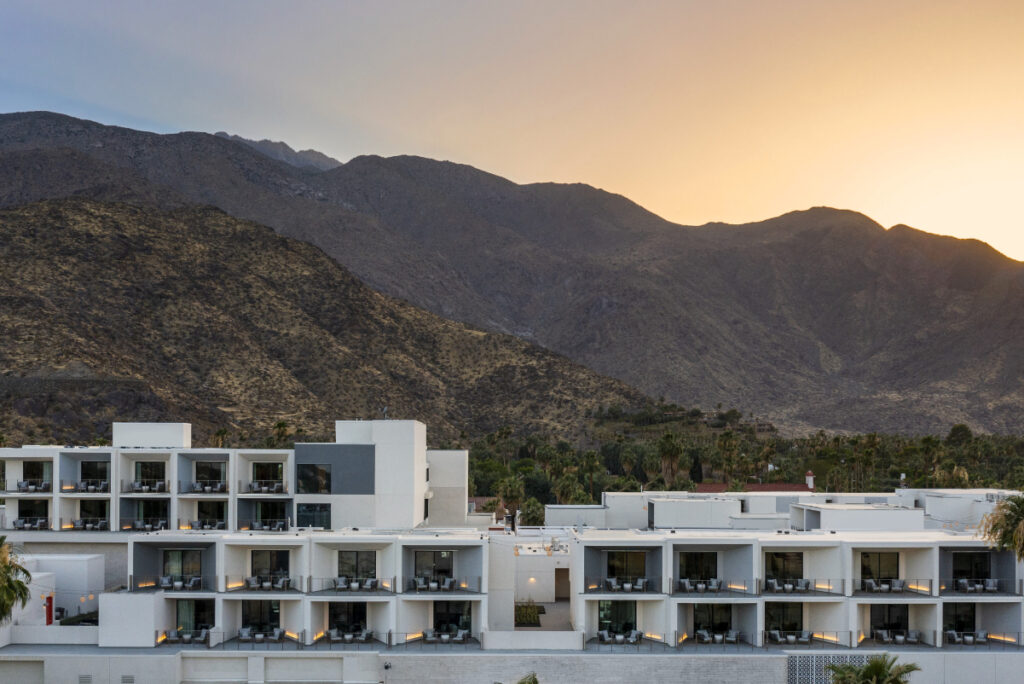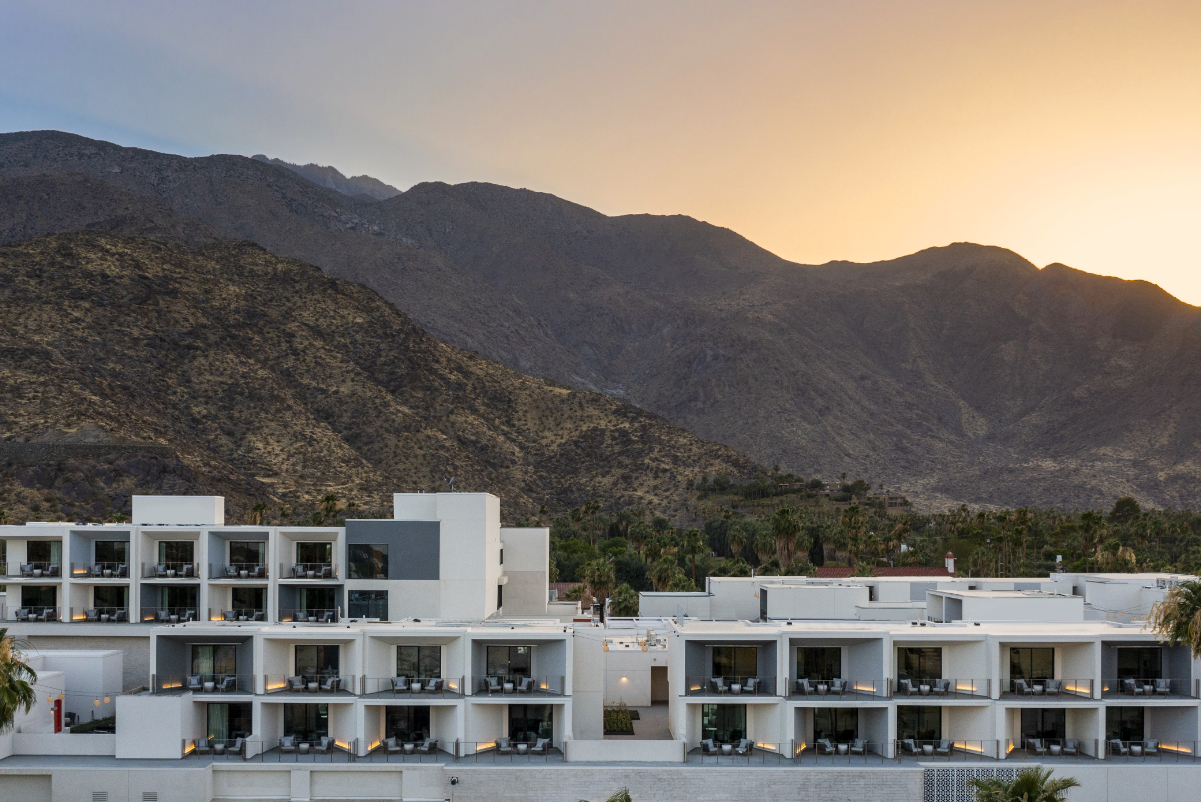
Hyatt Hotels is selective in where and how it adds hotels to meet the expectations of its loyalty program members, who largely have high incomes.
“We have so much white space,” said Mark Hoplamazian, president and CEO of Hyatt, on a Thursday earnings call to discuss third-quarter results. “We see places where we are way underpenetrated relative to our larger competitors.”
In many cities and towns, rival hotel groups might have, say, 7 properties, while Hyatt has none within 30 miles.
“We’re not running into ourselves in any market in the world, so we have a lot of space to grow,” he said, noting that the growth would be “very welcome by our loyalty members.”
Explosive Loyalty Program Growth
Hyatt wants to be strategic about where and how it expands worldwide partly to maximize the value of its loyalty program, executives said.
Membership at Hyatt’s rewards program surged 22% year-over-year, to 51 million members in the third quarter.
That statistic highlighted that the company is succeeding in signing up repeat customers â especially well-to-do travelers. The CEO said Hyatt’s loyalty members typically “have relatively higher net worth and household income” than the average American.
Hoplamazian said one reason the company has been gaining some traction with travelers is that Hyatt is increasingly offering places to stay and types of stay at a broader array of price points, increasing the likelihood a loyalty member will find it easy to earn points and find appealing redemption options.
Broadly speaking, as room count grows, so does the loyalty member base. That dynamic is one reason Hyatt has tried to scale up by adding hotels in more places relevant to its potential guests.
Acquisitions as a Path to Growth
Acquisitions are another way that Hyatt will fill the “white space” it sees. On Monday, Hyatt announced plans for a joint venture to manage Grupo Pineiro’s Bahia Principe all-inclusive resorts, adding 23 resorts with about 12,000 rooms.
Hoplamazian didn’t offer many more details than what Skift previously reported, saying that his team will reveal more after the deal closes “within a few months.”
“Presently, over 85% of Hyatt all-inclusive resorts in the Americas are 5-star properties, and this transaction enhances our network effect by expanding our own inclusive offerings to members and guests at multiple price points,” Hoplamazian said.
“This [Bahia Principe deal] is a unique opportunity to expand our all-inclusive offerings in the 4.5-star category, which fills white space in our brand portfolio.”
Keeping a “Hyperfocus” on Premium
Until recently, all of Hyatt’s brands were high-end, such as its upscale Hyatt Place and luxury Park Hyatt.
However, in 2023, the company debuted Hyatt Studios as its first upper-midscale extended-stay brand, aiming to appeal to travelers looking for mid-priced stays.
Analysts asked on Thursday if Hyatt would go further and copy Marriott and Hilton’s current playbooks and add cheaper midscale or premium economy brands.
“Our eyes are wide open that our other competitors have very large collections of conversion brands, including some in the midscale or lower mid-scale arenas,” Hoplamazian said. “But I don’t see us going there because it’s not a market that we currently play in.”
To ensure its luxury and lifestyle brands consistently differ on their promises, Hyatt made organizational changes this summer, forming separate teams to focus on its lifestyle hotels and its luxury hotels â just as it currently has a team focused on its upper-midscale brands.
“When you approach Hyatt, you’re not going to have a cacophony or a laundry list of brands,” Hoplamazian said.
For example, in the coming months, Hyatt will debut its new dedicated “lifestyle group” led by President & Creative Director Amar Lalvani, former executive chairman of Standard International group. The group will seek a “much sharper definition of each brand” and ensure that the company does a better job of personalizing service for high-income guests with high expectations.
The goal is to “hyperfocus on distinct customer groups that we’re serving and to more with higher fidelity and more breadth and depth,” Hoplamazian said.
Maintaining Hotel Quality Control
For its overall portfolio, Hyatt has lately found it more challenging to keep all its properties in a mint condition. This year, about 1.5% of net rooms have been exiting Hyatt’s system, roughly double the company’s historical average.
“Part of that has to do with just discipline in maintaining standards and elevating the quality of our portfolio,” Hoplamazian said. One example he cited was that some Amerisuites properties it acquired in 2004 and rebranded as Hyatt Place are now older and need repair and updating.
Other hotel groups, such as Marriott and Hilton, have more brands across more price points. When one of their properties “ages out of a brand,” they can rebrand it into a cheaper brand with lighter standards for amenities, decor, and paint quality rather than lose a property from its network.
Truist analyst Patrick Scholes asked whether Hyatt might copy that tactic and add an upscale conversion brand, perhaps equivalent to something like Hilton’s DoubleTree.
“I learned a long time ago that you never say never,” Hoplamazian said, but he suggested no such plans to create a brand were imminent.
“What we don’t want to do is do something that is going to be a detriment to either our brand reputation or serving the higher-end guests in each segment,” Hoplamazian said. “We also don’t want to end up in a situation ⦠where guests can’t tell what they’re going to get.”
To cover more ground, the operator will speed up the pace of conversions, taking over existing properties and running them as Hyatt brands. It will occasionally also temporarily buy hotel assets, but only if it believes it can resell them years later at a profit.
Hoplamazian gave the example of Hyatt waiting decades for the right opportunity in Mexico City, eventually paying $190 million for a prime property â which it later sold for about $400 million.
Loyalty Program Payoff
While the loyalty program isn’t driving all of Hyatt’s strategy, it’s an important pillar. High-end consumers tend to value exclusivity over ubiquity, so Hyatt wants a portfolio that reflects their tastes.
That’s why Hyatt is resisting the temptation to copy recent Hilton and Marriott moves downmarket by creating midscale and premium economy brands that can be added more quickly and cheaply.
Selective growth with a focus on luxury and upper-upscale segments may eventually leave the group more exposed to economic downturns than other hotel groups that are better diversified.
Yet selective growth may help make its loyalty program more lucrative on a per-member basis than those peer companies.
Management claimed consumer spending on Hyatt’s co-branded credit card “leads the industry.” However, conclusive claims are impossible because companies don’t disclose comparable figures.
Hyatt saw spending on its co-branded cards rise 16% year-over-year through the first nine months of the year.
Executives didn’t reveal the fee income Hyatt gets from banks for the cards. However, they said Thursday they would renegotiate their contracts with banks for a better “structure” by the end of next year.
Third Quarter Results
- Net income: $471 million, roughly flat year-over-year.
- Revenue per available room: up 3%
- Room pipeline: About 135,000 rooms (up 10% year-over-year)
Segment Trends
- U.S. leisure travel: Bookings at Hyatt’s U.S. hotels showed some softness as more well-to-do American vacationers traveled abroad this year.
- Business travel and groups and events: Continued to grow worldwide.
- All-inclusive resorts: The segment showed slight weakness, with package revenue per available room declining 0.9% compared to last year. Executives blamed “the impact of hurricanes.”
- Europe: Saw a 15% RevPAR boost, helped by the Paris Olympics and an influx of American vacationers.
- Asia Pacific: Rose 10% (excluding Greater China)
Hyatt executives said they were optimistic about booking trends for the fourth quarter and first quarter of 2025 overall.
“Coming out of September and into October, our leisure booking pace has really accelerated,” said Joahn Bottarini, chief financial officer. “Into the first quarter, we have a very strong booking pace.”
Mark Hoplamazian, president and CEO of Hyatt, will speak at Skift Global Forum East on November 20, 2024. Get tickets.
Accommodations Sector Stock Index Performance Year-to-Date
What am I looking at? The performance of hotels and short-term rental sector stocks within the ST200. The index includes companies publicly traded across global markets, including international and regional hotel brands, hotel REITs, hotel management companies, alternative accommodations, and timeshares.
The Skift Travel 200 (ST200)Â combines the financial performance of nearly 200 travel companies worth more than a trillion dollars into a single number. See more hotels and short-term rental financial sector performance.
Read the full methodology behind the Skift Travel 200.

